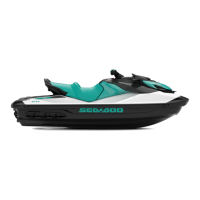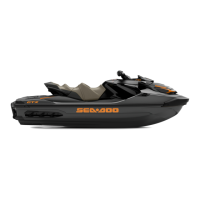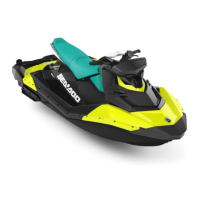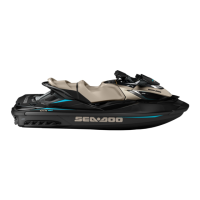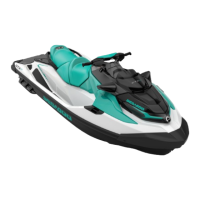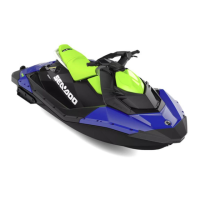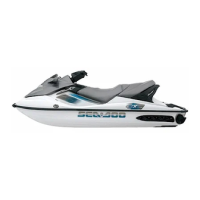Section 06 ENGINE MANAGEMENT (RFI)
Subsection 02 (DIAGNOSTIC PROCEDURES)
DIAGNOSTIC PROCEDURES
GENERAL
Here is the basic order suggested to diagnose a
suspected engine management or fuel injection
related problem.
– Check the chart in TROUBLESHOOTING sec-
tion to have an overview of problems and sug-
gested solutions.
– Check if there is a blinking check engine light or
a message displayed by the vehicle information
center. If so, use the VCK (Vehicle Communi-
cation Kit) and look for fault codes to diagnose
the trouble.
– Check all fuses.
– Check fuel rail pressure.
– Check spark plugs condition.
– Check fuel pump pressure.
– Check all connections of the wiring harness.
– Refer to COMPONENT INSPECTION, RE-
PLACEMENT AND ADJUSTMENT section for
procedures.
ENGINE MANAGEMENT SYSTEM
FAULT CODES
General
The faults registered in the ECM are kept when
the battery is disconnected.
IMPORTANT: After a problem has been solved,
ensure to clear the fault(s) in the ECM using
the VCK. This will properly reset the appropriate
counter(s). This will also record that the problem
has been fixed in the ECM memory.
Many fault codes at the same time is likely to be
burnt fuse(s).
For more information pertaining to the code faults
(state, count, first, etc.) and report, refer to
B.U.D.S. online help.
When using the service action suggested in the
Fault section of B.U.D.S., the system circuits are
referred as 5-32 for instance. It means connector
no. 5 and the circuit wire no. 32 as found in the
wiring diagram.
When they are referred as A-41, it means connec-
tor “A” on the ECM and the circuit 41.
TPS (Throttle Position Sensor) Faults
Faults which are reported in B.U.D.S. fall into two
groups: TPS faults and adaptation faults. These
are displayed on the B.U.D.S. system as TPS OUT
OF RANGE and TPS ADAPTATION FAILURE.
TPS “OUT OF RANGE” Fault
It is caused by the sensor reading going out of its
allowable range. This fault can occur during the
whole range of movement of the throttle.
To diagnose this fully, it is recommended to oper-
ate the throttle through its full range. It is also rec-
ommended to release the throttle quickly as this
may also show up a fault that is intermittent.
POSSIBLE CAUSES ACTION
Check if connector is
disconnected from TPS.
•Fix.
Check if sensor is loose.
• Fix and reset
Closed
Throttle
.
Inspect sensor for damage
or corrosion.
• Replace and reset
Closed Throttle
.
Inspect wiring (voltage
test).
• Repair.
• If bad wiring, repair.
Inspect wiring and
sensor(resistance test).
• If bad TPS, replace
and reset
Closed
Throttle
.
Test sensor operation
(wear test).
• Replace and reset
Closed Throttle
.
TPS “ADAPTATION FAILURE” Fault
It is caused by the idle position moving out of an
acceptable range.
Following failures can be affected by a TPS “Adap-
tation Failure”:
– Idle speed is out of range.
– Engine stops, when throttle is released quickly.
– Engine runs inconsistent in low partload or low
RPM.
smr2005-055 117

